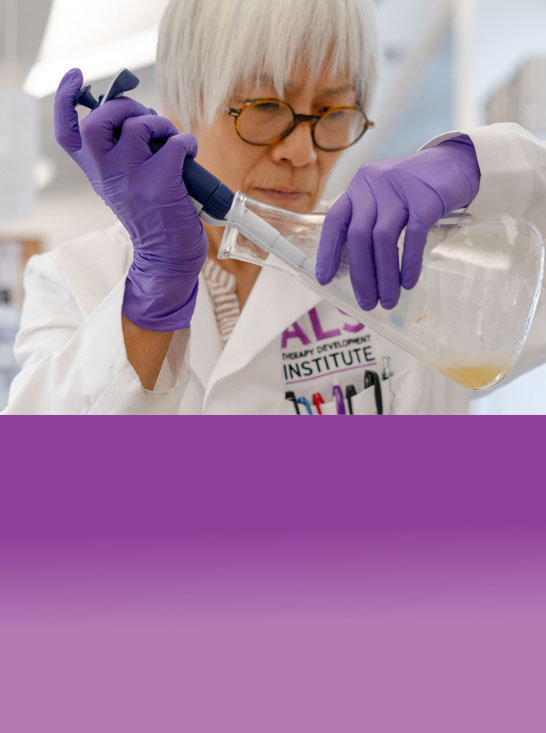 Cytokinetics, the maker of Tirasemtiv, announced that it has
opened enrollment for its Phase III clinical trial, VITALITY-ALS,
of their lead candidate ALS therapeutic using a novel endpoint, slow vital
capacity (SVC). Earlier studies of Tirasemtiv suggested that a subgroup of
people with ALS may have shown improvement in this specific measure of lung
function. Since this is a Phase 3 study, it is at the “pivotal” phase of
clinical development. Traditionally, after a compound reaches its endpoints in a
Phase III clinical trial, a company will pursue approval from the FDA to market
the compound as an effective treatment
Cytokinetics, the maker of Tirasemtiv, announced that it has
opened enrollment for its Phase III clinical trial, VITALITY-ALS,
of their lead candidate ALS therapeutic using a novel endpoint, slow vital
capacity (SVC). Earlier studies of Tirasemtiv suggested that a subgroup of
people with ALS may have shown improvement in this specific measure of lung
function. Since this is a Phase 3 study, it is at the “pivotal” phase of
clinical development. Traditionally, after a compound reaches its endpoints in a
Phase III clinical trial, a company will pursue approval from the FDA to market
the compound as an effective treatment
 What is Tirasemtiv?
What is Tirasemtiv?
Tirasemtiv (aka
CK-2017357 or CK-357) is a chemical compound developed to enhance the signals
between motor neurons and neuromuscular junctions (NMJ). As ALS progresses, the
connection between motor neurons and NMJs deteriorates, causing a decrease of
energy passing from one to the other to signal movement until the connection is
eventually lost. As these connections go away in ALS, the muscle atrophies. The drug promises to make the most of weakening
neuromuscular junctions by helping fast twitch fibers in skeletal muscles hold
on to calcium, enabling more powerful contractions. These so-called fast
skeletal muscles are needed in part, to maintain a healthy breathing rate.
The compound has been formulated as a pill and is intended to be swallowed, not
crushed.
What has occurred in
the clinic previously?
Tirasemtiv was first introduced by Cytokinetics in 2008 and
has been in several clinical research programs since, including a Phase II
study which read out results in 2014. The Phase II study, called BENEFIT-ALS,
enrolled 711 people at 75 different sites across 8 countries. In total, 473
PALS completed the Phase 2b study. The results of that study were complex, but
in general, those who were on active compound did statistically significantly
better according to a number of measures of breathing function and muscle
strength when compared to those on placebo. Some adverse events such as nausea
and weight loss were reported from those on the maximum dose of the drug. However, researchers believe that the
outcomes in the previous study provided evidence that tirasemtiv may have a
“clinically meaningful impact” on PALS and are hoping to repeat and expand on
those findings in the Phase 3 VITALITY-ALS clinical trial.
How is this trial
designed and different?
A total of 445 PALS will be enrolled in this new study
across 75 different sites in both North America and Europe. At the time of the
publication of this article, there were 5 sites listed actively enrolling PALS
into the trial, including 4 in the USA and 1 in Canada. As the other sites are announced
and open, they will be added to the clinical trial listing on our website here. It is
important to note that enrollment in this trial is limited to only PALS within
24 months of their disease onset. Since
the drug company is attempting to measure impact on breathing function with
tirasemtiv alone, PALS who are using any form of breathing aide, such as a
C-PAP, diaphragm pacer or ventilator will be excluded from the study. Similarly, with little known longer effects,
PALS who have previously participated in a stem cell treatment trial will not
be invited to participate in VITALITY-ALS.
All PALS will be placed on the low-dose of the compound
(250mg) for a two week lead in period and then be assigned to one of four arms:
250mg/day, 375mg/day, 500mg/day or placebo. Cytokinetics has designed the study
to determine what effect the compound has on their primary endpoint, slow vital
capacity (SVC), after 24 weeks of dosing, and they will determine efficacy on
secondary endpoints (ALSFRS-R and muscles tests providing a “muscle mega
score”) after the trial is completed after 48 weeks. This innovative clinical
trial design will be hotly followed in ALS throughout this year and next. Results from this study should be expected in
early 2017.
Bottom Line:
The ALS Therapy Development Institute believes this an
important clinical trial in ALS. Since this is a Phase 3 study, it is at the
“pivotal” phase of clinical development. Should VITALITY-ALS reach its
endpoints, it is common for the company to pursue approval from the FDA to
begin to market the compound as an effective treatment. In addition to being at
what is typically the final phase of clinical research, this study represents
an important advancement in ALS research with the use of slow vital capacity as
the primary endpoint. Most clinical trials in ALS have relied on the ALS
Functional Rating Score (Revised) as the primary endpoint and the approval here
by the FDA to use SVC instead marks a serious change in not just clinical trial
philosophy but also clinical trial practice in ALS.
Until this trial is completed, it is not known whether or
not Tirasemtiv is an effective treatment for ALS. As with all in the ALS
research community, the ALS Therapy Development Institute will eagerly watch
this trial and anticipate its results.
Helpful Links:

